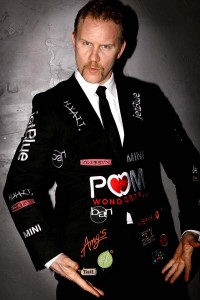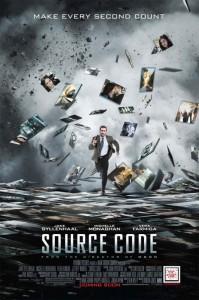Interview: Mike Disa of ‘Hoodwinked Too! Hood Vs. Evil’
Posted on April 27, 2011 at 12:43 pm
Director Mike Disa has a terrific piece in the Huffington Post about his new film, “Hoodwinked Too! Hood Vs. Evil,” with not one but two heroines who are strong, smart, brave, and compassionate.
Look at any recent animated movie. Despite sometimes clever plot devices, each of the main female characters’ primary concerns are always love, marriage and family issues. Overused and limiting themes for a modern heroine. And that’s when the female characters are even focused upon at all. How many animated films have you seen where the female lead is little more than a cliché object for the hero to impress in the last reel? Face it, if you want to be a strong female character in animation you are better off as a mouse.
I had a wonderful talk with Disa about making the film.
Why, all these decades later, do animated girls seem stuck back in the days of Snow White singing “Someday my prince will come?”
Isn’t that amazing? It’s been basically the same story model now for 90 years. It’s flabbergasting to me. I used to get in conversations about this when I worked at the big studios. They’d say, “Well, it’s a fairy tale and that’s what fairy tales are about.” I’d say, “Go read the original fairy tales! There’s a lot of other stuff going on. And we’re choosing to change this and that — why aren’t we choosing to change this part of it?” The only honest answer I have for that question is that the people making the films are unwilling to look at women in a different light. You can go on about fairy tales and animation and the patriarchal system that creates princesses and all that but I think it comes down to the people in films want to portray women like that.
Powerful women in films tend to be the bad guys — Ursula, Cruella DeVil, Maleficent.
There are powerful female heroes in animated films; they just aren’t human. Did you ever see “The Rescuers?” If you’re a mouse, you’ve got the potential to be a great character? You’re likely to get pigeonholed into being about family or sexual identity or role — if you’re an attractive human female or anything female in a Pixar movie, with the possible exception of Jessie in the “Toy Story” movies. And even she is played off as Woody’s counterpart. It’s odd because a lot of these studios are so interested in pushing the boundary technically. Why aren’t they so interested in telling more than the same old story over and over?
What is even more revolutionary in your film is that not only is the girl a heroine, but so is the grandmother! And not only is she tough, but compassionate and forgiving as well.
I’m really glad you liked that because that was a part of the film I was pushing hard for as well. Comments I have had about the Huffington Post article are like, “You don’t want to make love stories anymore?” Of course I want to make love stories! This is a love story. It is about the love between dear old friends who have lost each other along the way because of the choices they have made, about the love of a grandmother and granddaughter. It’s very much a classic love story. Love is about more than dating.
http://www.youtube.com/watch?v=azVIjdXOsQcI was so glad Patrick Warburton returned as Wolf. No one can nail dry, understated wit the way he does.
He is amazing. He was an absolute superstar. He would show up after a day of shooting his live-action series, exhausted after a 15-hour day on the set. (I can’t believe I just said “live-action.” It shows I live in he animation world. I’m like — “live action, it’s a little niche thing, don’t know if you’ve heard of it.”)
Not only would Patrick give an incredible performance but he would try alternatives, a different word choice or , he never quit. You don’t need to direct him. He’s got a fantastic ear. You play it back and he’ll hear the same thing I hear, and say, “Let’s do it again.” He’s a marvel to work with. It’s such a joy to have people come in and not treat it differently because it is animation. Every word he wants to be perfect, to work for the character, to fit the lip-synch, to reflect the subtext of the relationships and the rhythms of the other characters.
I’ve seen animation directors who are just: “Go faster. Go slower. Be angry.” That’s such a waste if you have an actor like Patrick who plays subtext and comedy and rhythm. If it’s appropriate, he’ll give you the funny line reading. But then he will give you such true heart and emotion, until you get these great little moments. There are some great moments where Wolf gets very introspective. A lesser actor would have gone for the laugh. You see that in animated films all the time. We got some real emotion — he’s an incredibly talented guy. I’m gushing, but he was just a revelation. And he and Wayne Newton are two of the nicest people I’ve ever met in show business.
I wanted to ask you about the Wayne Newton character! Is his singing harp inspired by “Mickey and the Beanstalk?”
He was influenced by it. I grew up with that movie. It’s spectacular. But that comes to a larger point. Everything in this movie is working on two different levels, and that is one of the things I like about it. The movie respects its audience enough that it knows you’ve seen other versions of these fairy tales. What we can do is subtly play with your expectations. What was a huge part of the film was knowing that everyone would immediately think of the most popular version of the story. So our beanstalk was made of cast iron and aluminum because I wanted something reminiscent of that wonderful organic Disney beanstalk but I wanted something completely different. The same with the singing harp. We need to nod to the classics but we need to twist it. The nightclub is based on the classic old Hollywood place where the great singers and performers played in the 1940’s before Las Vegas got big. If you’ve seen any of the movies or places we refer to, it adds another layer. But if you haven’t, it still works.


 Morgan Spurlock took on fast food in “
Morgan Spurlock took on fast food in “

